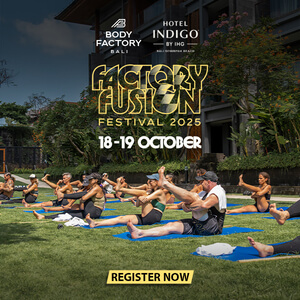The resonant chime of gongs and the piercing aroma of incense permeated my soul, igniting a profound urge to write about this grand ritual – Pitra Yadnya. One of the Panca Yadnya, it never ceases to fill me with awe. How incredibly intricate this process is, from its lengthy preparations and multi-day duration to the countless complex details it entails. It’s truly captivating to witness how the Balinese Hindu community so deeply honors a human being who is no longer alive—devoid of spirit, without the animating Bayu, or even the Pertiwi, Apah, and Teja that once composed their form. That body, seemingly stripped of everything, is treated with such profound nobility and beauty. This reverence leads me to a fundamental understanding: what has been bestowed upon us by the Creator shall be returned to His essence in an equally magnificent manner.
Merging Back into the Creator
To merge back into the Creator. This concise phrase encapsulates an ocean of meaning, especially for those immersed in Balinese Hindu philosophy. It represents the ultimate journey home, an inevitable process for every living entity, a return to the cosmic embrace from which it originated.
We, as humans, are born from the intertwining of five fundamental elements, the very same that constitute this vast universe. Our ancestors referred to them as Panca Maha Bhuta. “Panca” means five, and “Maha Bhuta” refers to these foundational elements. Imagine, our small bodies are a reflection of the grand cosmos, a microcosm mirroring the boundless macrocosm.

Let’s explore each of these five sacred elements:
- Pertiwi (Earth): The solid, unwavering foundation. In the universe, Pertiwi is the ground beneath our feet, the towering mountains, and the resilient rocks. Within us, Pertiwi provides structure and stability—the bones that support, the muscles enabling movement, and the skin encasing our form. Without Pertiwi, we would be a shapeless mass.
- Apah (Water): The fluid element that flows, the bringer of life. In nature, Apah is the vast ocean, the winding rivers, and the rain nourishing the earth. In our bodies, Apah is the guardian of moisture, the regulator of vital fluids, and the solvent in digestion and circulation—the blood that flows, the sweat that cleanses, the tears that well up. Apah is the current of life itself.
- Teja (Fire): Light and heat, the essence of energy and transformation. In the cosmos, Teja is the warming sun, the striking lightning, and the consuming flame. Within us, Teja regulates body temperature, fuels our bustling metabolism, and guides digestive processes. Teja is the burning ember of life that ignites our spirit.
- Bayu (Air): The gaseous element, the very breath of life. In nature, Bayu is the blowing wind, the oxygen we inhale, and the force of a storm. In our bodies, Bayu is our unending breath, the driving force behind agile movements, and the source of vital energy flowing through our veins. Bayu is the very whisper of existence.
- Akasa (Ether/Space): The most subtle element, the boundless space encompassing everything. In the universe, Akasa is the void of the cosmos, the space between stars and galaxies. Within us, Akasa represents the body’s cavities, providing a vessel for all organs and activities. Akasa is the space of consciousness, the container for thought and feeling.
These five elements forming human beings are, in essence, manifestations of the same elements that constitute the colossal universe. What exists externally, in the macrocosm or Bhuana Agung, is also present within the human body, the microcosm or Bhuana Alit. We are walking miniatures of the universe. Thus, human birth and death are integral parts of this grand cycle, a return to Bhuana Agung through methods that align with these natural elements. This is the core of Pitra Yadnya, a sacred ceremony designed to return the body and spirit to their origin.
The Journey Back: Diverse Paths to Eternity
In most traditional villages across Bali, the process of returning the deceased’s body is performed through Ngaben, which involves cremating the corpse or its bones. The cremation of the body via the element of Teja (Fire) is considered the swiftest way to process the Atman (soul) back to the realm of Hyang. There’s a profound belief underlying this: that the part of the human body holding immense energy or anger is the stomach, the center of digestion. Balinese society uses the term “basang bawak” (short stomach) for easily angered individuals, implying that anger often resides and churns in this area, where food is processed into energy. Therefore, the fastest means to release all worldly attachments, including anger, is through Teja—fire, combustion, Ngaben.
However, not all paths back involve fire. Certain Balinese traditions require the body to be buried first in Pertiwi (Earth). This can be for various reasons. For instance, there are areas in Buleleng, such as Desa Lemukih, which do not permit cremation due to their proximity to sacred mountains or temples. The cremation smoke is feared to defile the sanctity of these revered sites. Alternatively, it might be due to other factors like awaiting sufficient funds for Ngaben or preparations for a larger ceremony. In such cases, the earth becomes another chosen method to return the body to its source, allowing it to naturally decompose and rejoin Mother Earth. The very soil that sustained us in life now embraces us again.
There’s also the unique story from Desa Trunyan, nestled in a charming corner of Bali. There, a Taru Menyan tree emits an incredibly fragrant scent, as sweet as incense (from which the name Trunyan is derived). To prevent this exquisite fragrance from leaving the village and to preserve its sanctity, the Trunyan community adheres to a distinct tradition. The bodies of their deceased are neither cremated nor buried; instead, they are simply laid out on the ground, beneath the sacred tree. It is as if the element of Bayu (Air), carrying the tree’s fragrance, becomes a bridge for the Atman to return to the Almighty. This represents a pure form of surrender to nature, allowing Bayu to carry the soul home.
Meanwhile, the element of Apah (Water) plays a vital role in the continuation of the Pitra Yadnya procession. After cremation, Nganyut is the stage where the remaining ashes from Ngaben are scattered into the ocean, a river, or other sacred bodies of water. This act symbolizes the soul’s journey to the afterlife, crossing the ocean of life and death. In Ngaben practices, it’s not uncommon to see the Bade or Wadah (the towering cremation platform) adorned with carvings or decorations shaped like boats, symbolizing the spiritual vehicle that will carry the soul. Furthermore, there is a tradition of placing uang kepeng (traditional coins) within these arrangements as provisions or offerings for the guardians of the afterlife, ensuring the soul is granted a clear path to its destination. This practice specifically emphasizes the element of Apah as a path of return.
The Pitra Yadnya series does not conclude with the return of the physical body. Instead, the ceremonies continue to ensure the purification and liberation of the soul. This is the realm of the Akasa (Ether/Space) element, representing the most subtle and exalted path of return. After Ngaben (cremation), the process continues with Nyekah (often also called Mamukur or Ngerorasin). Nyekah is a purification ceremony for the Atma (soul) and Suksmasarira (subtle body) to free them from worldly attachments, preparing them to reach higher realms and unite with God. Complementing this spiritual journey, Meajar-ajar follows. This is a symbolic spiritual pilgrimage that escorts the purified ancestral souls to various important temples across Bali. Its purpose is to “introduce” them and seek blessings from the Deities, ensuring that the ancestors find their rightful place in eternity, even to the point of achieving Moksha—the pinnacle of complete liberation from the cycle of reincarnation, returning to Akasa without leaving any trace or coarse elements, utterly unblemished.
Ultimately, every living being will return to the cosmos, with one of these five elements as its pathway. This is an eternal cycle, an inevitable journey home. This reality brings me to a deeper understanding: humans are born carrying only these five elements. Not material wealth, nor any worldly possessions we accumulate. And upon returning, we simply yearn to be dissolved and reunited with these noble elements, returning to our origin in the grand universe.































